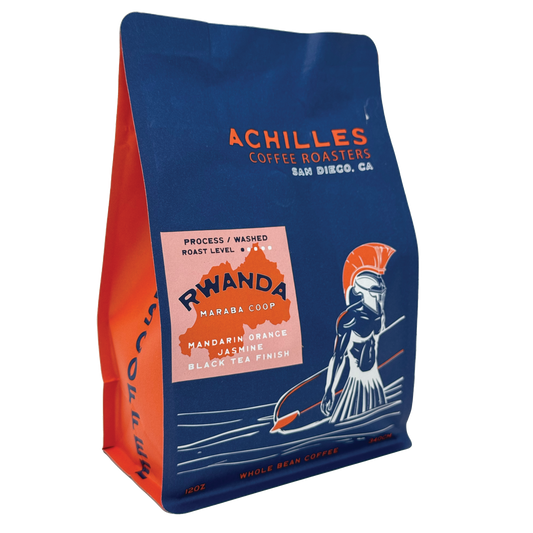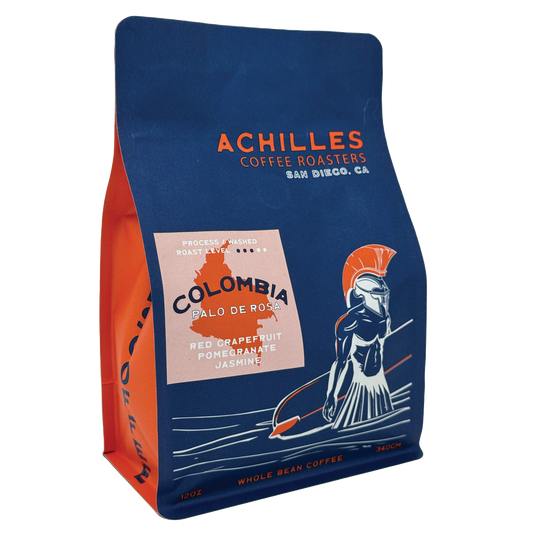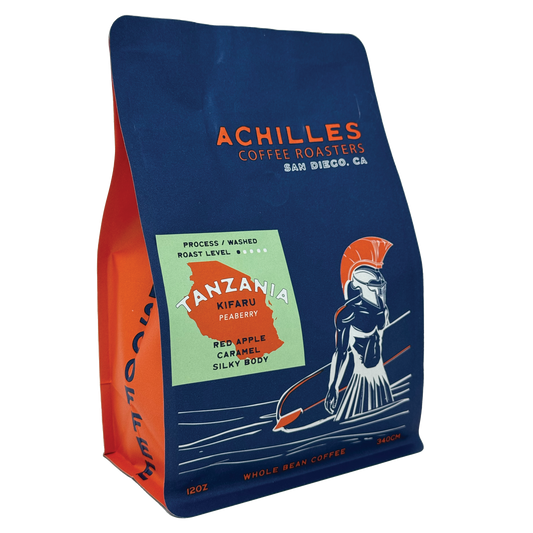The Overlooked Secret to Great Coffee
When it comes to brewing the perfect cup, most people focus on the obvious factors — water quality, temperature, brew time, and bean freshness. Yet there’s one element that quietly determines whether your coffee will be balanced, flavorful, and smooth, or flat, bitter, and inconsistent: grind consistency.
No matter how exceptional your beans are or how precise your recipe may be, if your grind isn’t uniform, your extraction won’t be either. Each grind particle acts like a miniature flavor capsule — and when some particles are too fine while others are too coarse, the result is uneven brewing. You’ll extract too much bitterness from the tiny grounds and too little sweetness from the larger ones.
Whether you’re pulling a tight, syrupy espresso shot or brewing a clean, aromatic pour-over, grind consistency is what ensures every particle gives up its best flavors in harmony. It’s the difference between a cup that sings with balance and one that tastes muddled or harsh.
In short, grind consistency is where the science of coffee meets the art of precision. It’s about understanding how physics and flavor work together — how water moves through coffee, how particle size affects extraction speed, and how a few microns can transform your cup. Master this, and you move from simply making coffee to truly crafting it.
What Grind Consistency Really Means
Grind consistency refers to how evenly your coffee beans are broken down during grinding. In a truly consistent grind, every particle of coffee is nearly identical in size and texture, which means that when hot water meets the grounds, it extracts flavor compounds at a uniform rate. This harmony is what allows your coffee to taste balanced, clean, and fully developed.
When grind size varies, extraction becomes unpredictable. You end up with a chaotic mix of tiny powdery fragments (called fines) and large, chunky pieces (known as boulders). Each of these reacts differently to water:
-
The fines have a large surface area, so water pulls out flavors quickly — sometimes too quickly — leading to over-extraction and harsh, bitter notes.
-
The boulders, on the other hand, are too large for water to penetrate efficiently, leaving them under-extracted — resulting in sourness, astringency, or a hollow body.
When these extremes exist in the same brew, your cup becomes imbalanced and confusing — one sip may be sharp and acidic, the next dull or bitter. Even high-end beans can taste disappointing when the grind is inconsistent, because the flavors aren’t being released in sync.
A consistent grind ensures that all your coffee grounds share the same fate: equal exposure, equal extraction, and equal contribution to flavor. This is what creates that smooth, harmonious cup where sweetness, acidity, and body work together — the hallmark of a perfectly brewed coffee.
Why Consistency Matters for Extraction
At its core, brewing coffee is a process of extraction — dissolving soluble compounds from ground coffee into water. Every sip of your coffee contains a complex mix of acids, sugars, oils, and aromatic compounds, all of which are released at different stages of the brew. The goal is to extract just the right amount of these elements to achieve balance: sweetness without bitterness, brightness without sharpness, and depth without heaviness.
Grind consistency is what makes that balance possible. When every particle is roughly the same size, water moves through the coffee bed evenly and predictably, drawing out flavor compounds at the same rate. This harmony of extraction is what separates a flat or harsh cup from one that feels vibrant, clean, and layered.
Here’s why consistency matters so much:
-
Even Extraction = Balanced Flavor. Each particle contributes proportionally to the brew, preventing that frustrating mix of bitter over-extraction and sour under-extraction in the same cup.
-
Predictability = Control. A consistent grind allows you to replicate your favorite brew over and over again. You can fine-tune variables like temperature, ratio, and time with confidence, knowing that grind size isn’t introducing chaos into the process.
-
Clarity = Expression of Origin. When extraction is uniform, subtle origin characteristics shine through — the citrus of an Ethiopian, the cocoa of a Guatemalan, or the caramel sweetness of a Colombian. Inconsistent grinds muddy those distinctions, masking the craftsmanship of both the farmer and the roaster.
Think of grind consistency as the foundation of great coffee — the invisible framework that holds everything else together. You can have exceptional beans, perfect water, and precise timing, but if your grind is uneven, the flavors will clash instead of blend.
When the grind is right, though, extraction becomes an act of balance — every drop of water pulls out flavor in harmony, revealing the coffee’s full potential. It’s the difference between just brewing coffee and mastering it.
How Different Brewing Methods Require Different Grinds
Each brew method relies on specific grind sizes and flow rates to extract coffee properly. Matching grind to method ensures balance:
|
Brew Method |
Ideal Grind |
Texture Comparison |
Extraction Notes |
|
Espresso |
Fine |
Table salt |
Short contact time, high pressure — needs uniform fines for balanced intensity |
|
Aeropress |
Medium-fine |
Slightly coarser than salt |
Versatile method; allows experimentation |
|
Pour-over (V60, Chemex) |
Medium |
Sand |
Balanced flow for clarity and sweetness |
|
Drip Coffee Maker |
Medium |
Beach sand |
Consistent, easy to repeat daily |
|
French Press |
Coarse |
Sea salt |
Long immersion time; prevents over-extraction and grit |
|
Cold Brew |
Extra Coarse |
Raw sugar |
Slow steeping extracts smooth sweetness and low acidity |
Using the wrong grind for your method — say, espresso grounds in a French press — throws extraction out of balance, leading to harsh or dull flavors.
The Role of Burr Grinders
If you’ve ever compared a blade grinder to a burr grinder, you’ve seen the difference in grind consistency firsthand — and tasted it, too. While both tools technically “grind” coffee, they work in completely different ways, and the results couldn’t be more distinct.
Blade Grinders: Fast but Unpredictable
Blade grinders work much like small food processors. A sharp metal blade spins rapidly at the bottom of the chamber, chopping beans into pieces of varying sizes. The longer you hold the button, the finer the grind becomes — but the process is chaotic.
-
Some beans are pulverized into dust-like fines, while others remain as large chunks.
-
The high-speed blades generate heat and friction, which can prematurely release aromatic oils and alter flavor.
-
Because particle size is random, extraction becomes inconsistent — leading to bitter and sour notes in the same cup.
Blade grinders may seem convenient, but they make it nearly impossible to achieve the kind of precision required for balanced brewing. You might hit the right texture by luck one day and completely miss it the next.
Burr Grinders: Precision by Design
Burr grinders, on the other hand, are designed for control and uniformity. They crush beans between two abrasive surfaces — called burrs — that maintain a consistent distance apart. This controlled pressure breaks the beans evenly, resulting in particles that are uniform in size and shape.
-
Burrs can be flat or conical, but both styles allow you to adjust the grind setting with precision, from fine espresso grounds to coarse French press textures.
-
Because the process is slower and more controlled, less heat is generated, preserving the delicate aromatics and natural sweetness of the coffee.
-
The even grind leads to predictable extraction, letting your coffee shine as intended — with clarity, sweetness, and balance.
Why a Burr Grinder Is Worth the Investment
A quality burr grinder is one of the most valuable upgrades you can make in your coffee journey — even more impactful than an expensive brewer or espresso machine. It provides:
-
Control over grind size and extraction time
-
Consistency from one brew to the next
-
Repeatability, essential for dialing in recipes or perfecting espresso shots
Even a modest burr grinder can transform your coffee from average to exceptional. The clarity, sweetness, and balance you’ll taste in each cup will make you wonder how you ever brewed without one.
Ultimately, a burr grinder isn’t just a piece of equipment — it’s a tool for precision, creativity, and mastery. Once you experience the difference, there’s no going back.
How to Test and Improve Your Grind Consistency
Learning to recognize and refine your grind consistency is one of the most empowering skills for any coffee enthusiast. It transforms your brewing from guesswork into a controlled, repeatable craft. While fancy tools like particle analyzers exist for professionals, you can achieve excellent results at home with a few simple observations — and your taste buds.
1. Start With a Taste Test
The most accurate way to judge your grind consistency is to simply brew and taste your coffee. Flavor never lies.
-
Brew a cup as usual, keeping every other variable — water temperature, dose, and brew time — consistent.
-
Taste for imbalance:
-
If your coffee tastes sharp, acidic, or thin, the grind is likely too coarse. The water is passing through too quickly, under-extracting the coffee’s sweetness and body.
-
If your coffee tastes bitter, ashy, or overly heavy, the grind is probably too fine, causing over-extraction and pulling harsh compounds from the grounds.
-
Aim for a flavor that feels balanced, rounded, and sweet, with clear notes and a smooth finish. When you reach that point, your grind consistency is likely on target.
2. Adjust Gradually
With a burr grinder, even small adjustments make a big difference. Move in tiny increments — often a single click finer or coarser — and keep notes. The key is to change only one variable at a time so you can isolate the effect of grind size on taste.
Consistency also means resisting the urge to constantly tweak your setup. Once you’ve dialed in a grind that works for your chosen brew method, stick with it and enjoy the stability it brings.
3. Maintain Consistency Across Variables
Great coffee depends on repeatability. To evaluate your grind effectively, keep other elements constant:
-
Use the same grinder for every test.
-
Measure your dose by weight, not by scoop.
-
Use consistent water temperature and ratio for every brew.
This controlled approach helps you accurately identify whether flavor changes come from grind adjustments or another factor in your process.
4. Perform a Visual Grind Test
For a quick hands-on check, pour a small amount of ground coffee onto a sheet of white paper or a light countertop. Spread the grounds into a thin layer and look closely:
-
A consistent grind will appear uniform in both color and texture, with few noticeable outliers.
-
If you see visible powdery specks mixed with large chunks, your grind is uneven. This is common with blade grinders or worn burrs.
You can also feel the texture by pinching a small amount between your fingers. Fine espresso grounds should feel silky, like table salt; medium grinds should resemble sand; and coarse grinds should feel like flaky sea salt.
5. Clean and Calibrate Regularly
Over time, coffee oils and residue can build up inside your grinder, affecting both grind size and consistency. Regular cleaning and calibration ensure that your grinder performs as intended and produces a uniform result every time.
The Takeaway: The Unsung Hero of Great Coffee
Grind consistency is the quiet foundation of every great cup. It doesn’t just influence flavor — it defines it. The evenness of your grind determines how gracefully water extracts sweetness, balance, and body from the beans. When particles are uniform, the coffee bed becomes a perfect landscape for extraction, allowing every drop of water to pull out the best your beans have to offer.
A consistent grind creates clarity and harmony in the cup: balanced sweetness, smooth acidity, and a clean finish that lets the coffee’s true character shine through. The origin’s unique voice — the chocolate tones of a dark roast, the caramel brightness of a medium, or the floral lift of a light roast — emerges only when extraction is even and controlled.
Whether you’re brewing a bright medium roast pour-over or a deep, rich dark roast espresso, mastering grind consistency turns good coffee into something extraordinary. It’s the bridge between craftsmanship and flavor — the moment where intention becomes taste.
In the end, the perfect cup isn’t about expensive gear, elaborate recipes, or chasing trends. It’s about understanding the small, invisible details that make every sip count — the rhythm of your grinder, the flow of water, the balance of time and texture.
Get the grind right, and suddenly, everything else falls into place.








